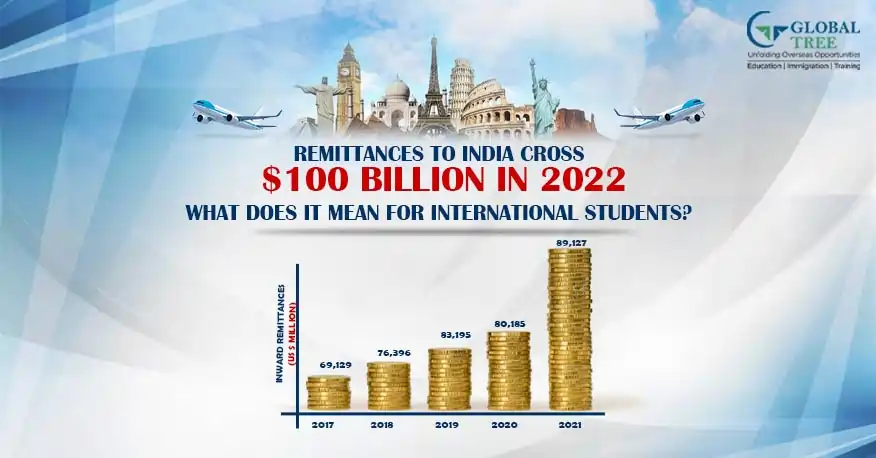Remittances to India Cross $100 Billion: What Does it mean for International Students?

Introduction
Remittances are an important source of revenue for low- and middle-income countries. It's also a great method to make money in foreign currencies.
India received $89,127 million in international inward remittances in 2021-22, the highest sum ever received in a single year. In 2022, India keeps being the biggest recipient of remittances from its foreigners. What's more incredible this year is that the total has crossed $100 billion! According to a World Bank report issued on Wednesday, this is the first time that a single country has received $100 billion in a single year. According to the estimation, remittances to India, which account for more than 60% of the region's inflows, are likely to grow by only 0.2% in 2023.
Why Have Remittances To India Risen Drastically?
According to World Bank report data, remittances have increased as Indian migrants' main work destination has changed from Gulf countries to the developed world. The United States (US) has eclipsed the United Arab Emirates (UAE) as India's top remittance source.
Remittances from the United States (US), the United Kingdom (UK), and Singapore climbed from 26 to 36 percent between 2016 and 2021, whereas figures from Gulf Cooperation Council (GCC) countries declined by half, from 54 to 28 percent.
Tech workers in the US and the UK appear to outnumber conventional blue-collar workers in the Gulf. As a result, the World Bank statistics reflects this demographic transition.
It is clearly visible that the percentage of Remittances has been increased year by year. Check out the below table for details.
| Year | Inward Remittances(US $ million) |
|---|---|
|
2017-18 |
69,129 |
|
2018-19 |
76,396 |
|
2019-20 |
83,195 |
|
2020-21 |
80,185 |
|
2021-22 |
89,127 |
Source: RBI
USA has stood as the top country from where India received the highest number of Inward Remittances, which is approximately 28%. And the survey has revealed that, major part of the remittances is sent by highly skilled professionals who have settled abroad. It has increased the demand for top skills abroad and it can be the best time to plan Studying Abroad and Settle Overseas. Reach our Expert counselors who can guide you in choosing careers, countries, universities, visa programs and more.



